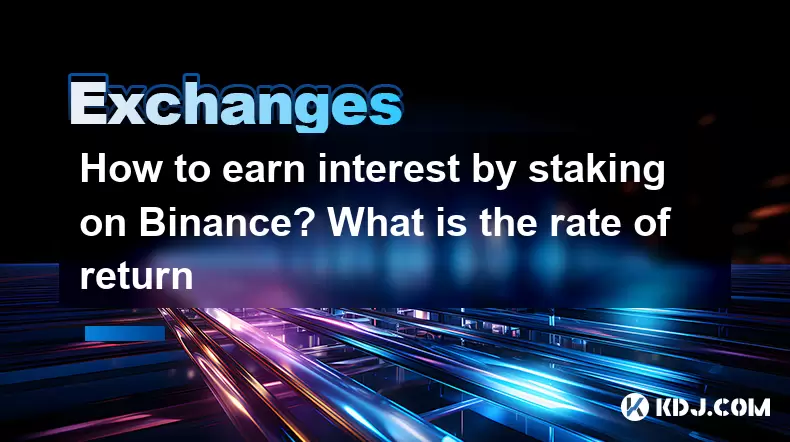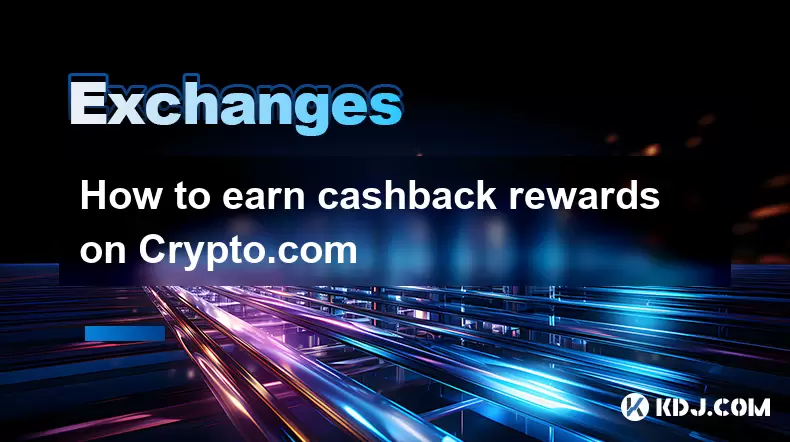-
 Bitcoin
Bitcoin $118000
0.40% -
 Ethereum
Ethereum $4525
2.14% -
 XRP
XRP $3.111
0.18% -
 Tether USDt
Tether USDt $1.001
0.00% -
 BNB
BNB $857.7
2.51% -
 Solana
Solana $192.7
1.99% -
 USDC
USDC $0.9999
-0.01% -
 Dogecoin
Dogecoin $0.2372
2.81% -
 Cardano
Cardano $0.9621
4.53% -
 TRON
TRON $0.3550
1.92% -
 Chainlink
Chainlink $25.91
14.15% -
 Hyperliquid
Hyperliquid $46.75
0.08% -
 Stellar
Stellar $0.4288
0.33% -
 Sui
Sui $3.817
1.25% -
 Bitcoin Cash
Bitcoin Cash $585.5
-0.31% -
 Ethena USDe
Ethena USDe $1.001
0.00% -
 Hedera
Hedera $0.2545
0.88% -
 Avalanche
Avalanche $25.26
4.03% -
 Litecoin
Litecoin $121.4
0.85% -
 Toncoin
Toncoin $3.502
1.28% -
 UNUS SED LEO
UNUS SED LEO $9.588
1.89% -
 Shiba Inu
Shiba Inu $0.00001315
1.21% -
 Uniswap
Uniswap $11.19
1.40% -
 Polkadot
Polkadot $4.099
3.12% -
 Dai
Dai $1.000
0.00% -
 Bitget Token
Bitget Token $4.694
1.31% -
 Cronos
Cronos $0.1518
0.03% -
 Monero
Monero $269.7
6.61% -
 Ethena
Ethena $0.7200
-1.56% -
 Pepe
Pepe $0.00001128
1.97%
How to earn interest by staking on Binance? What is the rate of return
Staking on Binance lets you earn rewards by locking up cryptocurrencies to support blockchain networks, with APYs varying by product and market conditions.
May 08, 2025 at 04:35 pm

Staking on Binance is a popular method for cryptocurrency holders to earn interest on their assets. This process involves locking up your cryptocurrencies to support the operations of a blockchain network, in return for which you receive rewards. In this article, we will explore how to stake on Binance and discuss the potential rates of return you might expect.
Understanding Staking on Binance
Staking is a process that allows you to participate in the operation of a proof-of-stake (PoS) blockchain network. By holding and locking up your cryptocurrencies, you help secure the network and validate transactions. In return, you earn rewards, which are typically distributed in the form of additional tokens.
Binance offers a staking platform that simplifies this process, allowing users to stake a variety of cryptocurrencies directly on their platform. This makes it accessible for both novice and experienced investors.
How to Start Staking on Binance
To begin staking on Binance, follow these steps:
- Log into your Binance account: Ensure you have a verified account on Binance. If you don't have one, you'll need to sign up and complete the necessary verification steps.
- Navigate to the Staking section: Once logged in, go to the 'Finance' section on the top navigation bar and select 'Staking'.
- Choose a staking product: Binance offers various staking options, including Locked Staking, DeFi Staking, and ETH 2.0 Staking. Choose the product that aligns with your investment goals and the cryptocurrency you wish to stake.
- Select the cryptocurrency and amount: After selecting a staking product, choose the specific cryptocurrency you want to stake and enter the amount you wish to lock up.
- Review and confirm: Carefully review the terms, including the staking period, rewards rate, and any potential penalties for early withdrawal. Once satisfied, confirm your staking order.
- Wait for rewards: Once your staking order is processed, your rewards will begin to accrue. The frequency of reward distribution varies depending on the staking product and cryptocurrency.
Types of Staking on Binance
Binance offers several types of staking products, each with its own set of features and benefits:
- Locked Staking: This involves locking up your cryptocurrencies for a fixed period. In return, you receive a higher rate of return compared to flexible staking options. The locked period can range from a few days to several months.
- Flexible Staking: With flexible staking, you can stake your cryptocurrencies without a fixed lock-up period. This allows you to withdraw your staked assets at any time, though the rewards rate may be lower compared to locked staking.
- DeFi Staking: This type of staking involves participating in decentralized finance (DeFi) protocols through Binance. It allows you to earn rewards from various DeFi platforms without needing to manage the technical aspects yourself.
- ETH 2.0 Staking: Specifically designed for Ethereum, this staking option allows you to participate in the Ethereum 2.0 network upgrade. By staking your ETH, you contribute to the security and efficiency of the Ethereum network.
Rates of Return on Binance Staking
The rate of return you can expect from staking on Binance varies depending on several factors, including the type of staking product, the cryptocurrency being staked, and the duration of the staking period.
- Locked Staking: Typically offers higher annual percentage yields (APYs) due to the fixed lock-up period. For example, staking certain cryptocurrencies might offer an APY ranging from 5% to 15% or even higher, depending on market conditions.
- Flexible Staking: The APYs for flexible staking are generally lower, often ranging from 1% to 7%. The advantage is the ability to withdraw your staked assets at any time, providing more liquidity.
- DeFi Staking: The rates of return for DeFi staking can vary widely, as they are influenced by the specific DeFi protocols you are participating in. APYs can range from 5% to 20% or more, depending on the protocol and market conditions.
- ETH 2.0 Staking: The APY for ETH 2.0 staking is typically around 4% to 6%, though this can fluctuate based on the overall demand for staking on the Ethereum network.
Factors Affecting Staking Rewards
Several factors can influence the rewards you receive from staking on Binance:
- Staking Period: Longer staking periods generally offer higher rewards, as they provide more stability to the network.
- Cryptocurrency: Different cryptocurrencies have varying reward structures. Some may offer higher APYs due to their specific network dynamics.
- Market Conditions: The overall market conditions can affect the demand for staking and, consequently, the rewards rate.
- Network Participation: The number of participants staking on a network can influence the rewards rate. A higher number of stakers might dilute the rewards, while fewer stakers could lead to higher individual rewards.
Managing Your Staked Assets
Once you have staked your assets on Binance, it's important to manage them effectively to maximize your returns:
- Monitor Your Rewards: Regularly check your staking rewards on the Binance platform. This will help you track your earnings and ensure everything is functioning as expected.
- Reinvest Your Rewards: Consider reinvesting your staking rewards to compound your earnings over time. This can significantly increase your overall returns.
- Stay Informed: Keep up to date with any changes to the staking products on Binance, as well as updates to the underlying blockchain networks. This will help you make informed decisions about your staked assets.
- Diversify Your Staking: To mitigate risk, consider staking a variety of cryptocurrencies across different staking products. This diversification can help balance your potential returns and exposure to different networks.
Frequently Asked Questions
Q: Can I unstake my assets at any time on Binance?
A: It depends on the type of staking product you choose. With flexible staking, you can unstake your assets at any time. However, with locked staking, you must wait until the lock-up period ends before you can unstake your assets. Early withdrawal from locked staking may incur penalties.
Q: Are there any risks associated with staking on Binance?
A: Yes, there are risks involved with staking. These include the potential for slashing (losing a portion of your staked assets due to network penalties), market volatility affecting the value of your staked assets, and the risk of changes to the staking rewards structure. Always conduct thorough research before staking your assets.
Q: How does Binance ensure the security of staked assets?
A: Binance employs various security measures to protect staked assets, including cold storage, multi-signature wallets, and regular security audits. However, the security of the underlying blockchain networks also plays a crucial role in the safety of your staked assets.
Q: Can I stake multiple cryptocurrencies on Binance at the same time?
A: Yes, you can stake multiple cryptocurrencies on Binance simultaneously. This allows you to diversify your staking portfolio and potentially maximize your returns across different assets and staking products.
Disclaimer:info@kdj.com
The information provided is not trading advice. kdj.com does not assume any responsibility for any investments made based on the information provided in this article. Cryptocurrencies are highly volatile and it is highly recommended that you invest with caution after thorough research!
If you believe that the content used on this website infringes your copyright, please contact us immediately (info@kdj.com) and we will delete it promptly.
- Kazakhstan's Crypto Leap: Bitcoin ETF and Central Asia's Digital Finance Future
- 2025-08-13 12:45:19
- BlockDAG Presale Blazes Past $371M: Fundraising Frenzy Fuels Crypto Sensation
- 2025-08-13 13:05:21
- Meme Coins: Chasing the 2025 Surge – Which Will Moonshot?
- 2025-08-13 10:25:23
- Bitcoin's Wild Ride: Rally, Pullback, and What's Next
- 2025-08-13 10:25:23
- Bitcoin, Bitmax, and Institutional Demand: A New Era of Crypto Investment
- 2025-08-13 10:45:12
- Solana, ROAM, and Airdrops: What's the Buzz in 2025?
- 2025-08-13 11:35:13
Related knowledge

How to use margin trading on Poloniex
Aug 08,2025 at 09:50am
Understanding Margin Trading on Poloniex

How to read the order book on KuCoin
Aug 10,2025 at 03:21pm
Understanding the Order Book Interface on KuCoinWhen accessing the order book on KuCoin, users are presented with a real-time display of buy and sell ...

How to read the order book on KuCoin
Aug 12,2025 at 02:28am
Understanding the Basics of Staking in CryptocurrencyStaking is a fundamental concept in the world of blockchain and cryptocurrencies, particularly wi...

How to set price alerts on Kraken
Aug 11,2025 at 08:49pm
Understanding Price Alerts on KrakenPrice alerts on Kraken are tools that allow traders to monitor specific cryptocurrency pairs for price movements. ...

How to avoid high gas fees on Uniswap
Aug 13,2025 at 11:35am
Understanding Gas Fees on UniswapGas fees on Uniswap are payments made to Ethereum miners or validators for processing transactions on the blockchain....

How to earn cashback rewards on Crypto.com
Aug 12,2025 at 02:08am
Understanding Cashback Rewards on Crypto.comCashback rewards on Crypto.com are a feature designed to incentivize users to spend using their Crypto.com...

How to use margin trading on Poloniex
Aug 08,2025 at 09:50am
Understanding Margin Trading on Poloniex

How to read the order book on KuCoin
Aug 10,2025 at 03:21pm
Understanding the Order Book Interface on KuCoinWhen accessing the order book on KuCoin, users are presented with a real-time display of buy and sell ...

How to read the order book on KuCoin
Aug 12,2025 at 02:28am
Understanding the Basics of Staking in CryptocurrencyStaking is a fundamental concept in the world of blockchain and cryptocurrencies, particularly wi...

How to set price alerts on Kraken
Aug 11,2025 at 08:49pm
Understanding Price Alerts on KrakenPrice alerts on Kraken are tools that allow traders to monitor specific cryptocurrency pairs for price movements. ...

How to avoid high gas fees on Uniswap
Aug 13,2025 at 11:35am
Understanding Gas Fees on UniswapGas fees on Uniswap are payments made to Ethereum miners or validators for processing transactions on the blockchain....

How to earn cashback rewards on Crypto.com
Aug 12,2025 at 02:08am
Understanding Cashback Rewards on Crypto.comCashback rewards on Crypto.com are a feature designed to incentivize users to spend using their Crypto.com...
See all articles

























































































